|
 |
|
 |
|
|
 |
|  |
|
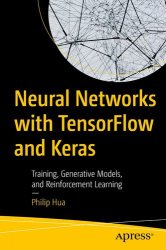 Название: Neural Networks with Tensorflow and Keras: Training, Generative Models, and Reinforcement Learning Название: Neural Networks with Tensorflow and Keras: Training, Generative Models, and Reinforcement Learning
Автор: Philip Hua
Издательство: Apress
Год: 2024
Страниц: 182
Язык: английский
Формат: pdf (true), epub (true)
Размер: 19.3 MB
Explore the capabilities of Machine Learning and neural networks. This comprehensive guidebook is tailored for professional programmers seeking to deepen their understanding of neural networks, Machine Learning (ML) techniques, and large language models (LLMs). The book explores the core of Machine Learning techniques, covering essential topics such as data pre-processing, model selection, and customization. It provides a robust foundation in neural network fundamentals, supplemented by practical case studies and projects. You will explore various network topologies, including Deep Neural Networks (DNN), Recurrent Neural Networks (RNN), Long Short-Term Memory (LSTM) networks, Variational Autoencoders (VAE), Generative Adversarial Networks (GAN), and Large Language Models (LLMs). Each concept is explained with clear, step-by-step instructions and accompanied by Python code examples using the latest versions of TensorFlow and Keras, ensuring a hands-on learning experience. | |
Разместил: Ingvar16 13-03-2025, 06:26 | Комментарии: 0 | Подробнее
| | | |
 |
|  |
 |
|
 |
|
|
 |
|  |
|
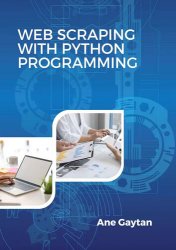 Название: Web Scraping with Python Programming: Guide To Learn How To Extract Data Farm The Web with Exercises in Python Название: Web Scraping with Python Programming: Guide To Learn How To Extract Data Farm The Web with Exercises in Python
Автор: Ane Gaytan, James A Smith
Издательство: Independently published
Год: September 29, 2024
Страниц: 165
Язык: английский
Формат: pdf, azw3, epub, mobi
Размер: 10.1 MB
Python is an easy to use and easy to learn programming language that is freely available on Macintosh, Windows, or Linux computers. So once you learn Python you can use it for the rest of your career without needing to purchase any software. Python is one of the easiest ways to get started as it is an object-oriented language. Python’s classes and objects are significantly easier to use than in any other language. Additionally, many libraries exist that make building a tool for web scraping in Python an absolute breeze. In this web scraping Python tutorial, we will outline everything needed to get started with a simple application. It will acquire text-based data from page sources, store it into a file and sort the output according to set parameters. Options for more advanced features when using Python for web scraping will be outlined at the very end, with suggestions for implementation. By following the steps outlined below in this tutorial, you will be able to understand how to do web scraping. | |
Разместил: Ingvar16 13-03-2025, 05:20 | Комментарии: 0 | Подробнее
| | | |
 |
|  |
 |
|
 |
|
|
 |
|  |
|
 Название: Mastering Microservices with Java and Spring Boot: Unlock the Secrets of Expert-Level Skills Название: Mastering Microservices with Java and Spring Boot: Unlock the Secrets of Expert-Level Skills
Автор: Larry Jones
Издательство: Walzone Press
Год: 2025
Страниц: 547
Язык: английский
Формат: epub (true)
Размер: 10.1 MB
Discover the intricate dynamics of modern software development with "Mastering Microservices with Java and Spring Boot: Unlock the Secrets of Expert-Level Skills". This authoritative guide empowers experienced developers to harness the full potential of microservices architecture. By delving into advanced Java techniques and leveraging the robust capabilities of Spring Boot, you'll gain the insights necessary to build scalable, resilient, and highly adaptable systems that meet the demands of today's fast-paced digital landscape. This comprehensive book walks you through essential topics with precision and clarity, addressing core facets like efficient deployment, inter-service communication, and robust security mechanisms. Learn how to deploy and manage microservices effectively, ensuring optimal performance and reliability. Explore real-world techniques and best practices for monitoring, testing, and scaling, all designed to enhance your architectural robustness and system efficiency. With a focus on practical application and advanced theory, this guide ensures an analytical approach to mastering microservices. | |
Разместил: Ingvar16 13-03-2025, 03:44 | Комментарии: 0 | Подробнее
| | | |
 |
|  |
 |
|
 |
|
|
 |
|  |
|
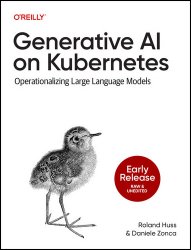 Название: Generative AI on Kubernetes: Operationalizing Large Language Models (Early Release) Название: Generative AI on Kubernetes: Operationalizing Large Language Models (Early Release)
Автор: Roland Huss, Daniele Zonca
Издательство: O’Reilly Media, Inc.
Год: 2025-03-12
Страниц: 108
Язык: английский
Формат: epub
Размер: 10.1 MB
Generative AI is revolutionizing industries, and Kubernetes has fast become the backbone for deploying and managing these resource-intensive workloads. This book serves as a practical, hands-on guide for MLOps engineers, software developers, Kubernetes administrators, and AI professionals ready to unlock AI innovation with the power of cloud native infrastructure. Authors Roland Huss and Daniele Zonca provide a clear road map for training, fine-tuning, deploying, and scaling GenAI models on Kubernetes, addressing challenges like resource optimization, automation, and security along the way. With actionable insights with real-world examples, readers will learn to tackle the opportunities and complexities of managing GenAI applications in production environments. Whether you're experimenting with large-scale language models or facing the nuances of AI deployment at scale, you'll uncover expertise you need to operationalize this exciting technology effectively. | |
Разместил: Ingvar16 12-03-2025, 20:54 | Комментарии: 0 | Подробнее
| | | |
 |
|  |
 |
|
 |
|
|
 |
|  |
|
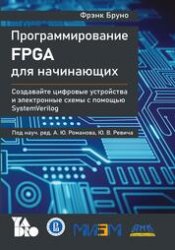 Название: Программирование FPGA для начинающих. Создавайте цифровые устройства и электронные схемы с помощью SystemVerilog Название: Программирование FPGA для начинающих. Создавайте цифровые устройства и электронные схемы с помощью SystemVerilog
Автор: Бруно Ф.
Издательство: ДМК Пресс
Год: 2022
Cтраниц: 304
Формат: pdf
Размер: 38 мб
Язык: русский
Данная книга открывает серию переводов зарубежных изданий по проектированию цифровых систем, которую готовят к выходу в свет компания «ДМК Пресс» и МИЭМ НИУ ВШЭ при поддержке группы компаний YADRO (yadro.com). Она предназначена для тех, кто хочет узнать о том, как устроена технология FPGA, и получить практический опыт работы с реальными проектами. Читатель получит общее представление о программируемых логических интегральных схемах, научится программировать на языке SystemVerilog, разработает, выполнит тестирование и реализует ряд проектов разной степени сложности от простого калькулятора до комплексного проекта, использующего AXI и внешнюю периферию, подключенную через PS/2 и VGA.Демонстрационные примеры реализованы на доступных платах Nexys A7 или Basys 3 (с чипами Xilinx) и сопровождаются исходными кодами. Издание будет полезно студентам, инженерам, а также широкому кругу читателей, интересующихся современной схемотехникой. | |
Разместил: rivasss 12-03-2025, 20:28 | Комментарии: 0 | Подробнее
| | | |
 |
|  |
 |
|
 |
|
|
 |
|  |
|
 Название: Mastering Java Reflection and Metaprogramming: Unlock the Secrets of Expert-Level Skills Название: Mastering Java Reflection and Metaprogramming: Unlock the Secrets of Expert-Level Skills
Автор: Larry Jones
Издательство: Walzone Press
Год: 2025
Страниц: 517
Язык: английский
Формат: epub (true)
Размер: 10.8 MB
"Mastering Java Reflection and Metaprogramming: Unlock the Secrets of Expert-Level Skills" is an essential resource for seasoned Java developers eager to delve into the advanced capabilities that set apart proficient programmers. This book demystifies the powerful yet complex topics of reflection and metaprogramming, empowering developers to craft more adaptable, flexible, and dynamic applications. Each chapter methodically unpacks intricate concepts, equipping readers with the skills to transform how they approach Java programming. Dive into a meticulously curated exploration of Java's most sophisticated features, including dynamic class loading, bytecode manipulation, and the strategic use of annotations. Through a balanced blend of theoretical depth and practical application, this book offers readers valuable insights into the seamless integration of reflection with modern Java features. Learn how to optimize performance while maintaining the highest security standards, ensuring your applications are both efficient and resilient to potential vulnerabilities. | |
Разместил: Ingvar16 12-03-2025, 19:48 | Комментарии: 0 | Подробнее
| | | |
 |
|  |
 |
|
 |
|
|
 |
|  |
|
 Название: RAG with Python Cookbook: Practical Recipes from Data Preprocessing to LLM Agents (Early Release) Название: RAG with Python Cookbook: Practical Recipes from Data Preprocessing to LLM Agents (Early Release)
Автор: Dominik Polzer
Издательство: O’Reilly Media, Inc.
Год: 2025-03-11
Язык: английский
Формат: epub (true), mobi
Размер: 10.9 MB
As businesses race to unlock the full potential of large language models (LLMs), a critical challenge has emerged: How do you connect these tools to real-time, external data to solve real-world problems? Retrieval-augmented generation (RAG) is the answer. By combining LLMs with information retrieval, RAG empowers you to build everything from intelligent chatbots to autonomous, task-solving agents. Packed with over 70 practical recipes, this go-to guide tackles a wide range of GenAI applications through structured hands-on learning. Author Dominik Polzer provides the tools you need to design, implement, and optimize RAG systems for your unique use cases. Whether you're working with simple data retrieval or designing cutting-edge autonomous agents, this cookbook will help you stay ahead of the curve. | |
Разместил: Ingvar16 12-03-2025, 18:59 | Комментарии: 0 | Подробнее
| | | |
 |
|  |
 |
|
 |
|
|
 |
|  |
|
 Название: Pascal Next – руководство программиста. Описание языка программирования с примерами Название: Pascal Next – руководство программиста. Описание языка программирования с примерами
Автор: Никита Культин
Издательство: Издательские решения
Год: 2023
Формат: pdf, epub
Страниц: 100
Размер: 10,94 Мб
Язык: русский
Описание нового языка программирования Pascal Next с примерами, демонстрирующими возможности языка программирования: операции ввода-вывода, использование циклов, работу с массивами, строками, файлами, встроенными и пользовательскими функциями. Книга адресована тем, кто интересуется программированием.
| |
Разместил: 366887 12-03-2025, 17:28 | Комментарии: 0 | Подробнее
| | | |
 |
|  |
 |
|
 |
|
|
 |
|  |
|
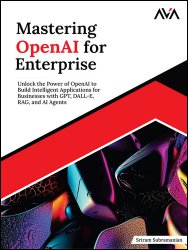 Название: Mastering OpenAI for Enterprise: Unlock the Power of OpenAI to Build Intelligent Applications for Businesses with GPT, DALL-E, RAG, and AI Agents Название: Mastering OpenAI for Enterprise: Unlock the Power of OpenAI to Build Intelligent Applications for Businesses with GPT, DALL-E, RAG, and AI Agents
Автор: Sriram Subramanian
Издательство: Orange Education Pvt Ltd, AVA
Год: 2025
Страниц: 242
Язык: английский
Формат: epub (true)
Размер: 14.5 MB
Master OpenAI and Unlock the Future of AI-Powered Innovation. OpenAI is transforming industries with cutting-edge AI models, redefining how businesses operate, innovate, and compete. Mastering OpenAI for Enterprise is your definitive guide to harnessing the power of OpenAI’s groundbreaking technologies, including GPT models, DALL·E, and more. Designed for AI engineers, developers, and business leaders, this book offers an in-depth understanding of OpenAI’s tools and their real-world applications in enterprise settings. This hands-on guide provides a structured learning path, featuring practical code samples, step-by-step implementations, and industry case studies that bridge theory with practice. Whether you're building intelligent chatbots, leveraging AI for automation, or exploring generative AI for creative solutions, this book equips you with the knowledge and skills to seamlessly integrate OpenAI into your workflows. This book is tailored for both beginners and experienced professionals looking to harness the power of OpenAI. | |
Разместил: Ingvar16 12-03-2025, 17:15 | Комментарии: 0 | Подробнее
| | | |
 |
|  |
 |
|
 |
|
|
 |
|  |
|
 Название: Разработка пользовательских интерфейсов Название: Разработка пользовательских интерфейсов
Автор: Тидвелл Дженифер
Издательство: Питер Пресс
Год: 2008
Страниц: 416
Формат: djvu
Размер: 23 мб
Качество: хорошее
Язык: русский
Разработать хороший интерфейс не так-то просто. Пользователю в наше время требуется программное обеспечение, работа которого прекрасно отлажена, интерфейс радует взгляд, да и в целом пользоваться программой должно быть легко. При этом клиенты и менеджеры требуют, чтобы ПО было оригинальным и быстро продавалось. | |
Разместил: gol8425 12-03-2025, 15:34 | Комментарии: 0 | Подробнее
| | | |
 |
|  |
|